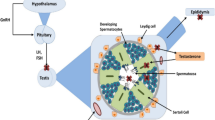Abstract
Polyvinyl chloride (PVC) tubing is an indispensable medical material for extracorporeal circulation therapy. However, di(2-ethylhexyl)phthalate (DEHP), a suspected endocrine disruptor, can be eluted from PVC, suggesting that an alternative material that does not contain DEHP is needed for clinical applications. First, we evaluated the endocrine disrupting risks of the plasticizers contained in PVC tubes by investigating their binding affinities for the human estrogen receptor alpha (ERα). Our results revealed that, while DEHP has some binding affinity for ERα, neither epoxidized soybean oil nor tris(2-ethylhexyl)trimellitate (an alternative to DEHP) has any affinity for ERα. Second, we evaluated the endocrine disrupting risks of a tube made of newly developed plasticizer-free (PF) materials. We confirmed the presence of DEHP and detected several unidentified substances in plasma stored within the PVC tube. This plasma's competitive binding affinity for ERα was significantly higher than that of control plasma (P < 0.01). In contrast, the profile of plasma stored in the PF tube was similar to that of the control, both in terms of high-performance liquid chromatography chromatograms and competitive binding capacity for ERα, suggesting that the PF tube is biocompatible and is useful for reducing the elution of substances capable of binding to ERα.
Similar content being viewed by others
References
RJ Jaeger RJ Rubin (1970) ArticleTitlePlasticizers from plastic devices: extraction, metabolism, and accumulation by biological systems Science 170 460–462 Occurrence Handle5460077 Occurrence HandleA1970H566100028 Occurrence Handle1:CAS:528:DyaE3MXhtFWqsQ%3D%3D
K Inoue H Okumura T Higuchi H Oka Y Yoshimura H Nakazawa (2002) ArticleTitleCharacterization of estrogenic compounds in medical polyvinyl chloride tubing by gas chromatography–mass spectrometry and estrogen receptor binding assay Clin Chim Acta 325 157–163 Occurrence Handle10.1016/S0009-8981(02)00291-7 Occurrence Handle12367781 Occurrence Handle1:CAS:528:DC%2BD38XnsVShtbw%3D
DK Agarwal WH Lawrence JE Turner J Autian (1989) ArticleTitleEffects of parenteral di-(2-ethylhexyl)phthalate (DEHP) on gonadal biochemistry, pathology, and reproductive performance of mice J Toxicol Environ Health 26 39–59 Occurrence Handle2913333 Occurrence Handle1:CAS:528:DyaL1MXhtlSjtLw%3D Occurrence Handle10.1080/15287398909531232
TJ Gray SD Gangolli (1986) ArticleTitleAspects of the testicular toxicity of phthalate esters Environ Health Perspect 65 229–235 Occurrence Handle3709446 Occurrence Handle1:CAS:528:DyaL28XktVWrtr4%3D
WW Huber B Grasl-Kraupp R Schulte-Hermann (1996) ArticleTitleHepatocarcinogenic potential of di(2-ethylhexyl)phthalate in rodents and its implications on human risk Crit Rev Toxicol 26 365–481 Occurrence Handle8817083 Occurrence Handle1:CAS:528:DyaK28XksF2itb4%3D
T Colborn D Dumanoski JP Myers (1996) Our stolen future Dutton New York
Center for Devices and Radiological Health, U.S. Food and Drug Administration (FDA). Safety assessment of di(2-ethylhexyl)phthalate (DEHP) released from PVC. Medical Devices, 2001
Organization of Economic Cooperation and Development (OECD). Third meeting of the validation management group for the screening and testing of endocrine disrupters (mammalian effects). ENV/JM/TG/EDTA. Paris: OECD, 2001
T Dine M Luyckx M Cazin C Brunet JC Cazin F Goudaliez (1991) ArticleTitleRapid determination by high-performance liquid chromatography of di-2-ethylhexyl phthalate in plasma stored in plastic bags Biomed Chromatogr 5 94–97 Occurrence Handle10.1002/bmc.1130050211 Occurrence Handle1868266 Occurrence Handle1:CAS:528:DyaK3MXktFGmt7c%3D
A Ohashi M Hibiya Y Nakagami M Kato H Yoshikawa T Toba H Kushimoto H Katsumata K Murakami M Hasegawa M Tomita H Hasegawa M Shikano S Kawashima (1999) ArticleTitleHigh-performance membranes are useful in the removal of di-(2-ethylhexyl)phthalate eluted from blood circulating tubes J Jpn Soc Dial Ther 32 1291–1297
K Sawanishi T Iwasaki Y Shimahara E Ishikawa K Daijo M Hirose F Osako (1982) ArticleTitleKidney failure sexual dysfunction in male patients undergoing hemodialysis Nippon Rinsho 40 1377–1384 Occurrence Handle6890591 Occurrence Handle1:STN:280:DyaL3s%2FmtVaisw%3D%3D
Author information
Authors and Affiliations
Corresponding author
Additional information
Presented in part at the 42nd Congress of the Japanese Society for Artificial Organs, October 5–7, 2004, Tokyo, Japan
Rights and permissions
About this article
Cite this article
Ohashi, A., Kotera, H., Hori, H. et al. Evaluation of endocrine disrupting activity of plasticizers in polyvinyl chloride tubes by estrogen receptor alpha binding assay. J Artif Organs 8, 252–256 (2005). https://doi.org/10.1007/s10047-005-0307-y
Received:
Accepted:
Issue Date:
DOI: https://doi.org/10.1007/s10047-005-0307-y




